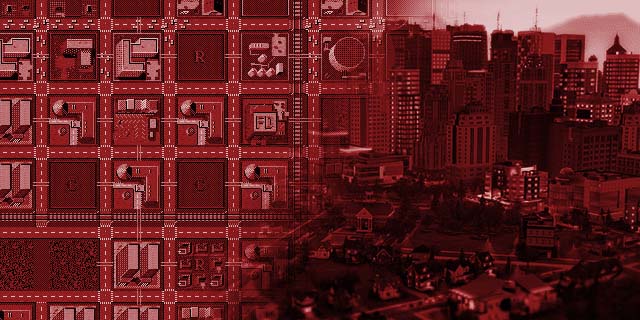
In From Pixels to Polygons, we examine classic game franchises that have survived the long transition from the 8- or 16-bit era to the current console generation.
Maxis’ SimCity franchise, the game that brought designer Will Wright into the forefront, is a historic franchise. It led to the creation and popularization of many Sim-based game franchises, including SimCity spin-offs such as the beloved Sims series. Although 2013’s release of the new SimCity is behind us now, it’s time we took a look at the series’ evolution and, more importantly, how it ended up where it is today.
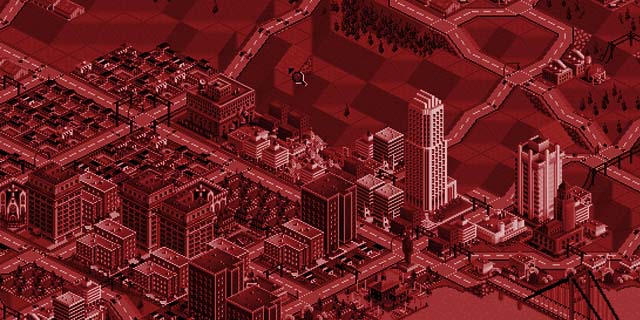
Becoming a mayor
 The first game was originally designed as a development tool, and became a game of its own when Will Wright found it was more fun than the game it was being used for. Obviously, that first iteration as a map design tool lacked much of the simulation, but these features were quickly added as it became a game in its own right.
The first game was originally designed as a development tool, and became a game of its own when Will Wright found it was more fun than the game it was being used for. Obviously, that first iteration as a map design tool lacked much of the simulation, but these features were quickly added as it became a game in its own right.
The economics in the original game were very basic. Lowering taxes adjusted demand, while buildings and roads had a static monthly cost. Your selection of buildings was rather limited, and many games of SimCity would end in either a hopeless cycle of traffic jams or a massively-expensive rail system that basically replaced roads. The fact that zones were all the same size also had a tendency to hinder creativity. Neighborhoods lacked any sort of character, as with no terrain features to build around other than a river, cities would invariably all look the same.
With SimCity 2000, Maxis added to every aspect of the game. It added low-density zoning, and zones could now be placed in any shape on terrain. Zoned land close enough to a road would eventually be developed if demand was present. In conjunction with terrain elevation, this led to unique neighborhoods instead of the endless grid of the first game. Buildings still carried a flat cost per month, but the economic aspect of the game was greatly expanded with the addition of more services and ordinances that could benefit the city. Education became an important aspect of long-term management, as well educated citizens earned more money and thus could live in more expensive housing.
With all of these added features, SimCity 2000 had a tendency to suffer from excessive micromanagement. Power plants with finite lifespans would need to be replaced regularly, putting excessive strain on your finances. Even without the financial hit, this feature would become a bit of a nuisance when playing on fast game speed, as it would happen rather frequently. With each new aspect, the game could become more difficult. Timing was important: not only in building services when they were in demand, but building them to a scale that your tax base would support. Keep too little of a buffer, and you would find your power plants needed replacing right when money was tight.
It was clear that more depth and more options for the player were needed. SimCity 2000‘s main flaw was simply that there wasn’t much to do in an existing and profitable city other than to just watch it run. The series needed some new goals for existing cities, and to expand on underused features such as land values, giving the player more tax reward for supplying high-end neighborhoods with better services. – Jeff deSolla
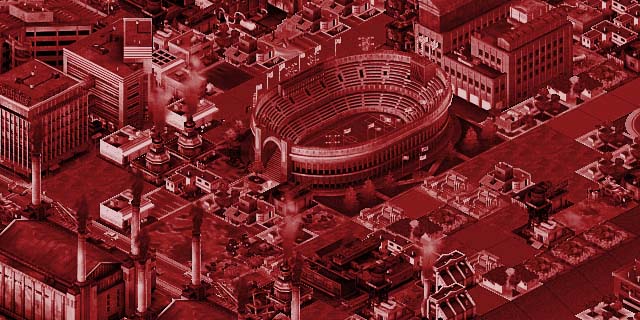
Reconstructing the formula
 As fun as SimCity 2000 was, its economic system was rough. Population growth didn’t require much more than lowering taxes periodically and a good ratio of the different zones, but a fickle implementation of urban decay led to fast, unstable changes in urban development if each neighborhood wasn’t carefully micromanaged. This was at odds with the brutal cycle of power plant replacement, which required lots of money and narrowed the possible strategies to a handful.
As fun as SimCity 2000 was, its economic system was rough. Population growth didn’t require much more than lowering taxes periodically and a good ratio of the different zones, but a fickle implementation of urban decay led to fast, unstable changes in urban development if each neighborhood wasn’t carefully micromanaged. This was at odds with the brutal cycle of power plant replacement, which required lots of money and narrowed the possible strategies to a handful.
To counteract this, the developers decided to focus on land value for the sequel. By adding new public buildings, medium-density zoning and also the problem of waste management, SimCity 3000 managed to add nuance to the generic neighborhoods of the original game, diversifying them and making each of them different. Or at least they should have been, were it not so easy to plop down a couple of police stations and keep the land value high.
Hence SimCity 4 decided to finish what SimCity 3000 started, liberating it from the shackles of liquidity. It didn’t matter now how cheap or expensive schools or libraries were; you had to pay for their maintenance, and a small city couldn’t cover it. You had to grow, slowly, and the game got better for it. – Erik Twice
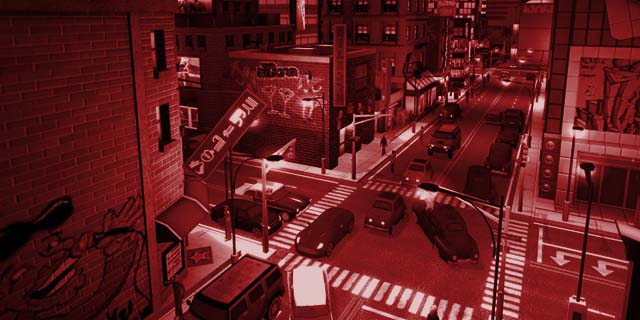
Engineering a new formula
 After the huge success of four main SimCity games and several spinoffs, EA wanted to take the series in a different direction. Working with strategy developer Tilted Mill Entertainment on development allowed it to bring a different perspective to SimCity Societies. The big deviation was focused less on the city planning the series was known for and more on social-engineering, reducing the game’s complexity in the process and making it more accessible to newcomers. Unfortunately, the design changes were poorly planned.
After the huge success of four main SimCity games and several spinoffs, EA wanted to take the series in a different direction. Working with strategy developer Tilted Mill Entertainment on development allowed it to bring a different perspective to SimCity Societies. The big deviation was focused less on the city planning the series was known for and more on social-engineering, reducing the game’s complexity in the process and making it more accessible to newcomers. Unfortunately, the design changes were poorly planned.
While it seemed like it had the potential to be a huge step forward for the series by shifting the focus and removing a lot of the elements that might baffle newcomers, it never really hit that mark. It still felt like a SimCity game, but its lack of challenge combined with the disconnect between the many social engineering aspects and the actual happiness of the Sims in your city. The efforts to move the series forward were admirable, but it was hard to appreciate a game that felt like it wasn’t meant for fans of the previous games.
After SimCity Societies‘ poor reception, the series went on a hiatus as EA (and the original developer, Maxis) regrouped to decide what to do next. While Societies wasn’t a complete failure, it did demonstrate a lack of understanding of how to evolve a series without stepping all over everything that made it popular. The long break was disheartening for fans, but it wasn’t long before a new game in the series was announced from the team that made SimCity what it was to begin with. – Andrew Passafiume
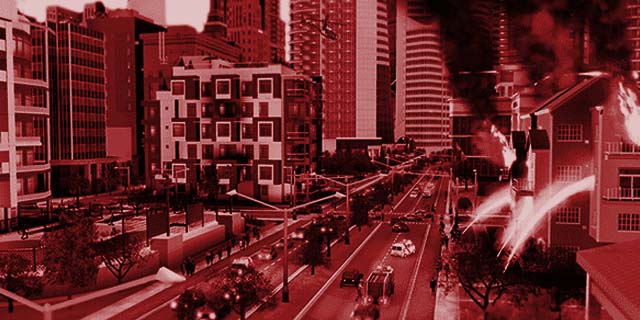
Building a city for the future
 The new SimCity was EA and Maxis’ attempt to bring the series back in a huge way. With a brand new engine and a host of new features, SimCity’s launch seemed like it had the potential to be big. There was one unfortunate issue though: the game was designed to be played online, meaning you had to always be connected to the Internet in order to play. Everything, including your cities and game saves, were tied to the servers.
The new SimCity was EA and Maxis’ attempt to bring the series back in a huge way. With a brand new engine and a host of new features, SimCity’s launch seemed like it had the potential to be big. There was one unfortunate issue though: the game was designed to be played online, meaning you had to always be connected to the Internet in order to play. Everything, including your cities and game saves, were tied to the servers.
The potential was there. Maxis wanted to make a SimCity game that was focused on multiplayer (or, at the very least, connecting multiple cities to work together), allowing for some more experimentation and also an easy way to connect with friends. If you wanted to avoid playing with people altogether, you could create multiple cities that were designed to work together to keep each other thriving. The cities were smaller as a result, but each city would have a specialty, encouraging cooperation. Then EA attempted to release the game, leading to a disastrous launch and making it almost impossible for people to play for the first week (and even a little beyond that).
The core of SimCity was still intact and completely functional, even if the reduced city size made it difficult to do what you might do in the older titles, but the always-online functionality crippled a game that had the potential to become a positive step forward. Once things stabilized, the game became a fun, multiplayer (or multi-city) focused take on the classic formula. Unfortunately, the launch still left many fans unable to go back.
The series still has plenty of potential, but after two failed attempts of branching it out in a different direction, the best thing to do is to release a SimCity that fits into the mold created by the original few games. It doesn’t need to be an exact replica, but one that learns from what made those games work and doesn’t try to branch out. This may never happen, and SimCity may never be the same after the 2013 game, but there is still hope that lessons have been learned and we may see the “SimCity 5” that fans are still waiting for. – Andrew Passafiume
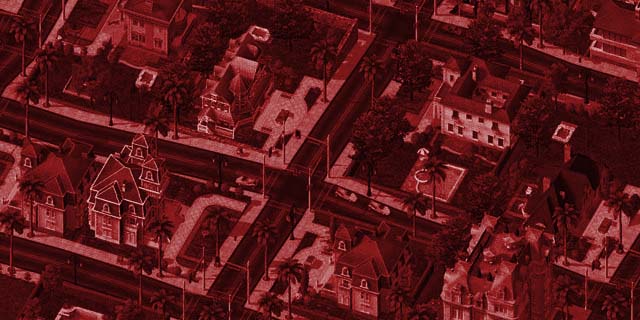
What’s the peak of the SimCity series?
 Jeff: I think SimCity 4 reached the inevitable peak. Each successive game added more services and more layers to manage, and SimCity 4 offers the best balance between micromanagement and expansion.
Jeff: I think SimCity 4 reached the inevitable peak. Each successive game added more services and more layers to manage, and SimCity 4 offers the best balance between micromanagement and expansion.
 Erik: Without question, SimCity 4 has replaced all the other games of the franchise in my mind. It solved all the quirks and problems of all previous titles, and its economic system is compelling enough that I always keep coming back to it.
Erik: Without question, SimCity 4 has replaced all the other games of the franchise in my mind. It solved all the quirks and problems of all previous titles, and its economic system is compelling enough that I always keep coming back to it.
 Andrew: I grew up with SimCity 2000 (and, to an extent, 3000), but it was SimCity 4 that had me hooked from the beginning. It featured the smartest improvements and didn’t unnecessarily remove features and yet, if you give it the right amount of time, is probably the most accessible game that feels like classic SimCity. SC4 is both the best the series has to offer and also the most playable game in the series today.
Andrew: I grew up with SimCity 2000 (and, to an extent, 3000), but it was SimCity 4 that had me hooked from the beginning. It featured the smartest improvements and didn’t unnecessarily remove features and yet, if you give it the right amount of time, is probably the most accessible game that feels like classic SimCity. SC4 is both the best the series has to offer and also the most playable game in the series today.
In the next installment, we look at the series that saved Square and brought the JRPG to new heights of popularity: Final Fantasy.



















